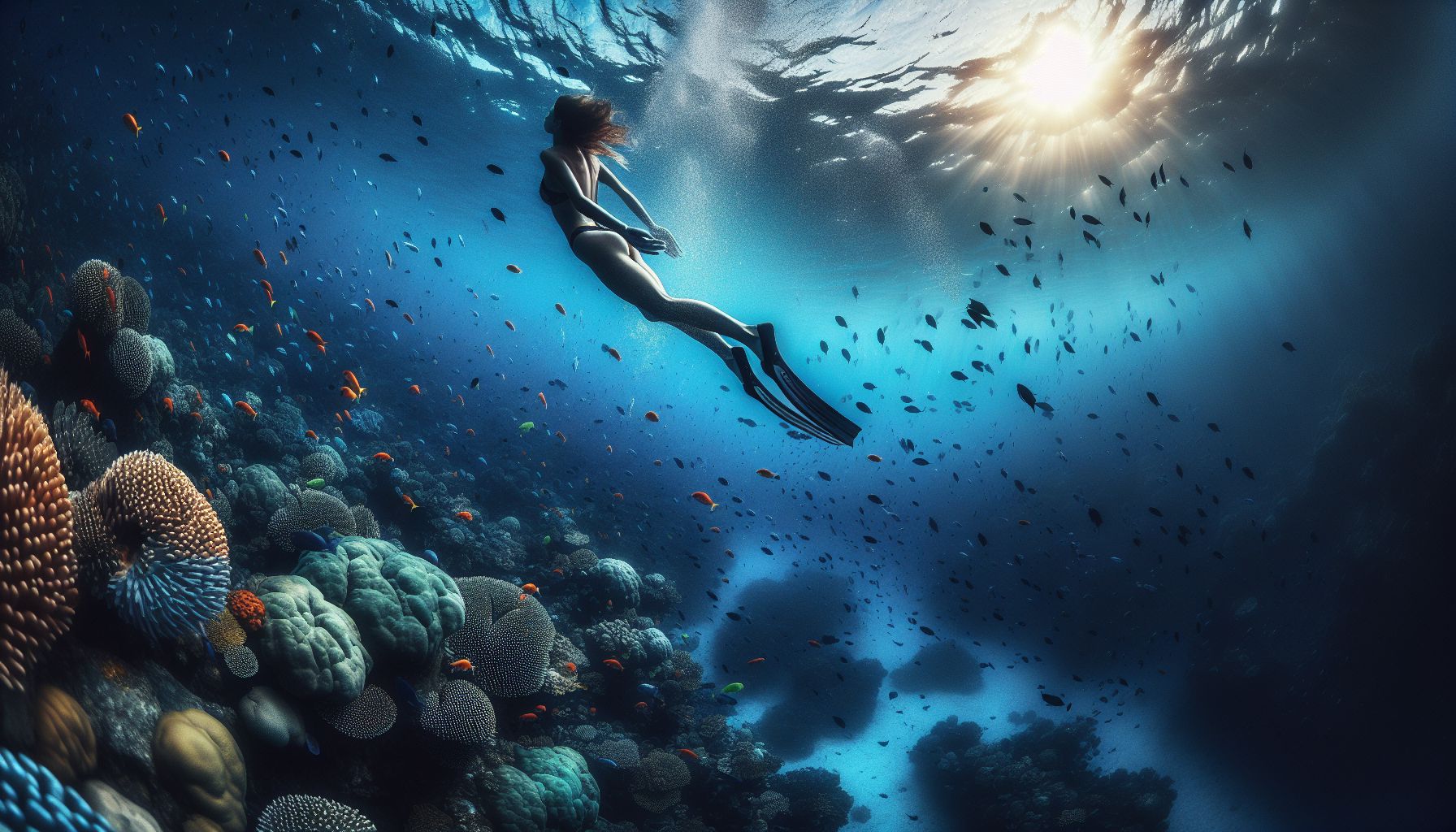Freediving is a mesmerizing aquatic dance between humans and the serene, yet untamed world beneath the waves. Devoid of bulky scuba gear, freedivers rely on a single breath to explore the depths of the ocean. The sport, both ancient and modern, calls upon the primal instincts of humankind, merged with disciplined training to push the boundaries of what is physically conceivable. In this article, we delve into the world of freediving, exploring its origins, techniques, safety measures, and the sheer enthrallment that it offers those who dare to plunge into the deep.
The Genesis of Freediving
Freediving is not a modern-day creation. Its roots can be traced back thousands of years when ancient civilizations engaged in breath-hold diving for food, pearls, and even warfare. Greek sponge fishermen, Japanese Ama divers, and Pacific Islanders were known for their skills in diving to great depths without any breathing apparatus.
Today, freediving has evolved into a competitive sport with various disciplines, each presenting a set of unique challenges and requiring different skill sets. From the static apnea, where divers attempt to hold their breath for as long as possible, to the dynamic with fins, where divers swim horizontally underwater for distance, there is a freediving style that caters to the preferences of every water enthusiast.
The Discipline and Techniques of Freediving
Freediving is as much a mental discipline as it is a physical one. Successful freedivers often speak of the meditative state they achieve under the water—where silence and the absence of gravity create an otherworldly experience.
Training the Body
Physically, freediving demands excellent overall fitness. Divers must condition their bodies to withstand the pressure of the deep and to optimize oxygen consumption. Key components include developing strong and flexible muscles, particularly around the diaphragm, and increasing lung capacity through specialized exercises.
One central concept is learning to efficiently equalize the pressure in the ears and sinuses, which is essential when descending into the depths. The most common method is the Valsalva maneuver, but experienced divers often use the more advanced Frenzel technique for deeper dives.
Training the Mind
Mentally, freedivers must hone their ability to focus and remain calm under pressure. Breathing techniques, visualization, and yoga are often incorporated into their training to help enhance relaxation and mental fortitude. The calmer and more relaxed the diver, the less oxygen they consume, allowing them to extend their dives.
Techniques like the ‘breathe-up,’ a series of slow, deep breaths before submerging, can help to lower the heart rate and prepare the body for the low-oxygen environment it’s about to encounter.
Safety in Freediving
Safety in freediving cannot be overemphasized. While it is a relatively safe sport when practiced correctly, it does involve risks, such as shallow water blackout—the loss of consciousness caused by hypoxia, typically occurring on ascent within the last ten meters.
It is imperative that freedivers never dive alone and always adhere to the buddy system. Diving partners should be trained to watch for signs of hypoxia and know how to act in case of an emergency. Additional precautions include diving within one’s limits, gradual depth progression, and the use of a dive rope for orientation and security.
The Allure of Freediving
Despite its inherent dangers, the allure of freediving is magnetic. Freedivers speak of the euphoria that comes from being one with the ocean, the tranquility of the underwater world, and the personal satisfaction of pushing their limits. Photographers and conservationists are also drawn to freediving as it allows for a non-invasive approach to exploring and documenting marine life.
The Marine Environment
The insatiable curiosity to witness the untouched beauty of the sea keeps many freedivers returning to the water. With over 70% of our planet covered by oceans, the possibilities for exploration are nearly boundless. Coral reefs teeming with vividly colored fish, shipwrecks shrouded in mystery, and the occasional encounter with majestic marine creatures like whales or dolphins underscores the enchantment of freediving.
Competitive Freediving
For those drawn to competition, freediving offers a global stage. World championships and records for each discipline are recognized by organizations such as AIDA International (International Association for Development of Apnea). Freediving competitions push athletes to the brink of their capabilities in a controlled environment, celebrating the human spirit’s aspirations and tenacity.
Closing Thoughts
Freediving is an art form, a science, and a philosophy. It’s a practice that reconnects us with the natural world, compelling us to be vulnerable, focused, and profoundly alive. Whether seeking adventure, personal challenge, or a deeper understanding of oneself and the ocean, freediving offers a unique journey.
For those looking to explore the world of freediving further, consider these resources:
- AIDA International – The leading global authority on competitive freediving and breath-hold diving education.
- Freedive Earth – A resource for freediving training tips, spot guides, and community forums.
- DeeperBlue.com – An online magazine focused on freediving, scuba diving, ocean advocacy, and underwater sports.
Whether you’re a seasoned freediver or someone who’s just curious about what lies beneath the surface of the ocean, remember that the journey into the deep is as much about discovering the mysteries of the underwater world as it is about uncovering the depths within yourself.
